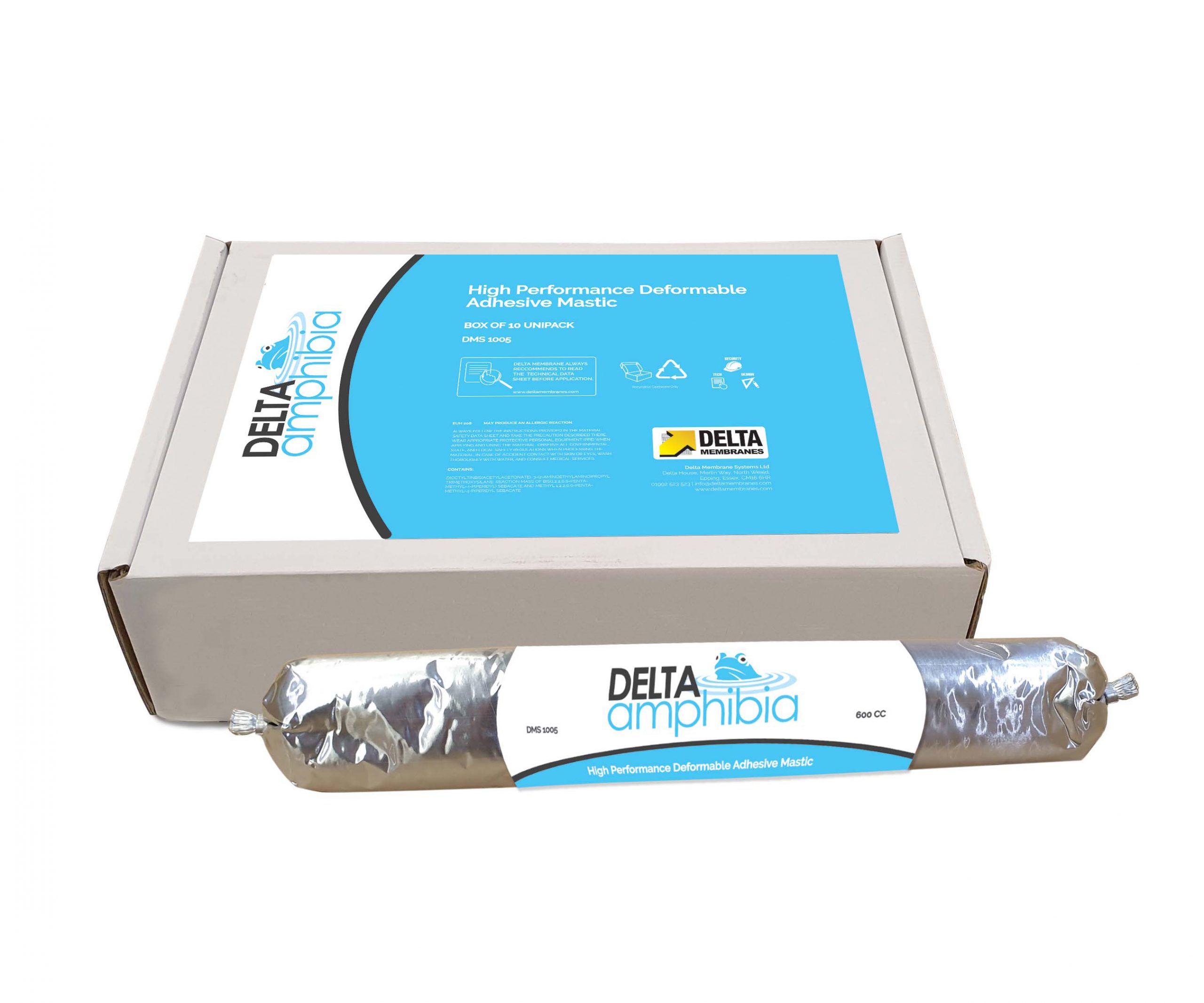This website uses cookies so that we can provide you with the best user experience possible. Cookie information is stored in your browser and performs functions such as recognising you when you return to our website and helping our team to understand which sections of the website you find most interesting and useful.

Delta Amphibia Bi Mastic
Delta Amphibia Bi Mastic is an elastic, one-component, modified silane thixotropic sealant and adhesive mastic for high performance bonding. It can be applied both inside and outside as a replacement or integration of mechanical fastenings.
Delta Amphibia Bi Mastic is a multi-purpose sealant material for waterproofing, fixing Delta Amphibia membranes as an elastic bonding and sealant for internal and external applications, suitable on a wide range of materials without the requirement of primers,
such as aluminium, steel, zinc, copper, cement, plaster, bricks, stone, ceramics, glass, wood and rubbers, plastics and/or synthetics.
Enquire about this product
- Application
- Product Details
- Downloads
- Technical Drawings
- High thixotropy, adhesion and durability
- Initial grip with “suction effect”
- Excellent final mechanical performance
- Hygroscopic behaviour when cross-linked with environmental
humidity - Applicable on a wide range of surfaces, both absorbent and non-absorbent without the need for pre-treatments
- Suitable for damp surfaces
- Non-corrosive when applied to metal surfaces
- Solvent and isocyanate free
- Excellent resistance to UV light
- Quick and easy to use
Delta Amphibia Bi Mastic is a multi-purpose sealant material for waterproofing, fixing Delta Amphibia membranes as an elastic bonding and sealant for internal and external applications, suitable on a wide range of materials without the requirement of primers, such as aluminium, steel, zinc, copper, cement, plaster, bricks, stone, ceramics, glass, wood and rubbers, plastics and/or synthetics.
Delta Amphibia Bi Mastic can be used:
- Firm bonding on overlaps of Delta Amphibia membranes
- Joining cavity drain membranes
- To fasten thermal and acoustic panels, cover panels and
plasterboard - Can be used internally and externally (inside and outside)
- Bonding and assembly of thresholds, skirting and windowsills
- Sealing of fittings and details in basins and pools
- To create joints and fittings between prefabricated elements
- Sealing service penetrations
- Pipe penetrations through floors and walls
- Remedial ‘breaking out’ of concrete

